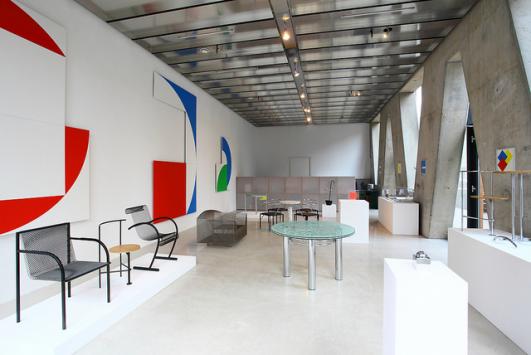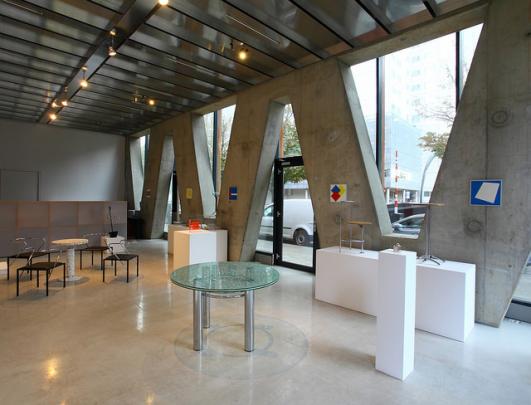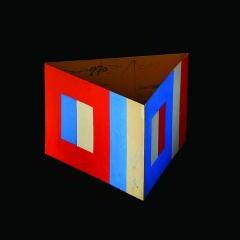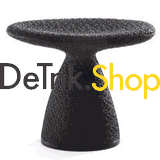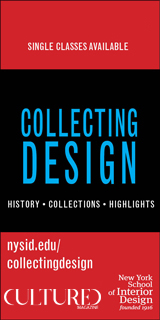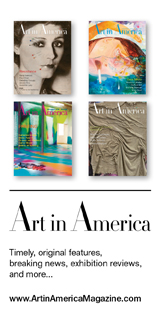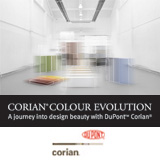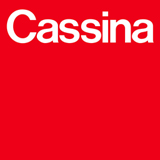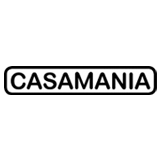Galerie VIVID proudly presents Bob Bonies & Shiro Kuramata
17 September - 5 November '17
Bob Bonies and Shiro Kuramata were both born before the worldwar II and started their career in the 60's. Both belonged to the avantgarde in the 1960's-'70. Kuramata, one of the most important Japanese designers had a strong connection with Holland. The Dutch brand Pastoe produced several of his designs. Unfortunateley he died in 1991 at an age of 56.
Bob Bonies' work has been shown in important museums worldwide and is still making new work in his studio in The Hague
At VIVID monumental abstract geometric paintings by Bob Bonies will be presented in combination with the iconic furniture of Shiro Kuramata.
Among this furniture will be some rare and important works with a unique 'Broken Glass' table as one of the highlights
Bob Bonies (1937)
In the Netherlands constructivist art looks back on a long tradition. The group “de Stijl” originated in the 1920s and in the course of time came to shape the development of constructivist art decisively, so that it is today considered by art critics to be one of the main directions in classical modern art. The creed of the “de Stijl” group still influences art, architecture, and industrial design in the Netherlands today, in that it continues to live as a creative maxim in the aesthetic program “Less is more”.
Bob Bonies can be considered to be a successor of the “de Stijl” movement in as much as he did not just restrict himself to free art alone but extended his artistic work to architecture, industrial design, and art teaching, and exemplified the aim of those pioneers who wanted to use their artistic ideas for shaping their surroundings. Moreover, he can also be considered a pioneer of the second generation, as his constructivist painting imparted a new impetus to the geometric direction of art in the Netherlands of the 1960s.
Were one to look for a conceptual motif in Bonies' art work, one would in the first instance cite the theory of Josef Albers on “The Unity behind the Many” and “The Many behind the Unity”. His method, however systematic it may be, is directed less towards the programmatic and more towards investigating the potential of variables. Thus Bonies' art work does not develop in a serial way as is usual in the constructivist domain, but rather in a sequence of cycles of works whose themes recur with varied points of view. The only fixed factor in Bonies' investigation over many years into color and form is his handling of colors: he has always used and today still uses only four colors, namely the three primary colors red, yellow and blue, the secondary color green (as the complementary color of red) and the noncolor white. On the other hand, he has given the handling of form as well as of format a more open interpretation. His vocabulary of forms includes differently weighted categories of areas with linear edges (stripes of varying thickness, triangles, and rectangles) arranged in the three classical directions horizontal, vertical and diagonal, and has in the last years been extended to include the circle as well as the circular segment. The basic colors and forms appear in different systems of arrangements, of which there are, as regards their number and combination, essentially two types of picture. First there is the closed and contained absolute shape of the square which dominates Bonies' work and which also occurs standing on a corner (diamond), and then there is, so to speak, the polarly opposed type, the “shaped canvas”, which is sometimes included in the shaping of the picture. This novel shape was developed by American artists during the 1960s and was intended to free them from the traditional rectangular pictorial shape in order to achieve a congruence between picture and format, as well as at the same time attaining an enhanced objectivity.
Shiro Kuramata (1934 - 1991)
Drawn to the unusual, the sensual, and the ephemeral, Shiro Kuramata spent much of his career reassessing the relationship between form and function in furniture design. In his designs for tables, chairs, and lamps, Kuramata imposed his own versions of surreal and minimalist idioms on everyday objects.
Kuramata earned degrees in architecture and interior design from Tokyo Polytechnic and the Kuwazawa Institute for Design. From 1957 to 1963 Kuramata worked for Maysuya, the Tokyo department store, before founding his own design practice in 1965.
As an interior designer, Shiro Kuramata designed more than three hundred bars and restaurants and also designed furniture. Shiro Kuramata became famous overnight in 1977 for the S-shaped, curvilinear "Drawer in an Irregular Form", a piece of storage furniture in black stained ash with the drawer fronts lacquered white.
In the 1980s, Shiro Kuramata designed numerous sensational pieces of furniture, for which he used unusual materials or invented entirely new uses. The "Miss Blanche" chair is an utterly original and poetic invention of Shiro Kuramata's; red paper rosebuds are molded into the transparent seat of acrylic resin. In 1986 Shiro Kuramata designed "How High the Moon", a piece of seat furniture with voluminous forms, made of nickel-plated expanded metal, sheet metal slotted and stretched into a mesh or lattice, a construction that lends this chair a light and airy transparency. In 1976 Shiro Kuramata came up with the "Glass Chair", consisting entirely of slabs of glass glued together with a new type of adhesive. In the 1980, Shiro Kuramata also designed several pieces of furniture for Memphis, which are notably more sophisticated and aesthetically reticent than other designs produced by Memphis. The Shiro Kuramata designs for Memphis include the "Kyoto" (1983) table of stained concrete and "Sally" (1987), a table made of metal and broken glass. For Issey Miyake, Shiro Kuramata designed boutiques from 1984 in Paris, Tokyo, and New York.
In 1988 Shiro Kuramata moved to Paris, where he set up a design practice in the rue Royal.
